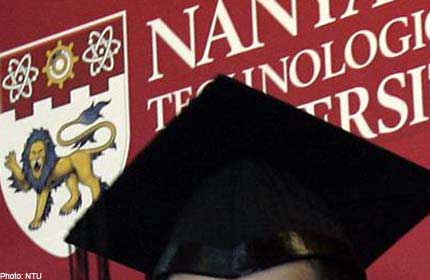
Singapore's Nanyang Technological University has made it into a book on centres of learning that breathe new life into their surroundings.
The school - whose development has been closely linked to that of the Jurong industrial estate - is one of three case studies on campuses that have had an impact on their local areas.
Titled Univer-cities, the book was written by six contributors including former Cambridge University head of architecture Peter Carolin.
"The city has been around for some 5,000 years, and universities are a newer invention," said its editor, Mr Anthony Teo. "In the next century, new developments in knowledge, technology and innovations will affect both cities and universities."
Nanyang Technological University - or NTU for short - plans to transform itself into a "mini city" by 2025.
For example, it already has a CleanTech Park next door, which promotes environmentally sustainable technologies and is designed to encourage collaboration between industry and academia.
The 20km Jurong Region Line, which will connect commuters to the city centre by 2025, is expected to have a stop at NTU.
Univer-cities was published by a Singapore company called World Scientific Publishing.

Its launch ceremony yesterday was attended by Professor Rudolph Marcus, Nobel Prize winner for chemistry.
The book's other two case studies were on Cambridge University and the University of California, Berkeley.
In one section, the authors explore the "Cambridge phenomenon". This refers to how the institution and its surrounding area have attracted high technology firms such as Microsoft and GlaxoSmith-Kline since the 1970s.
Other contributors to the book include Berkeley's assistant vice-chancellor for physical and environmental planning Emily Marthinsen.

Get a copy of The Straits Times or go to straitstimes.com for more stories.

